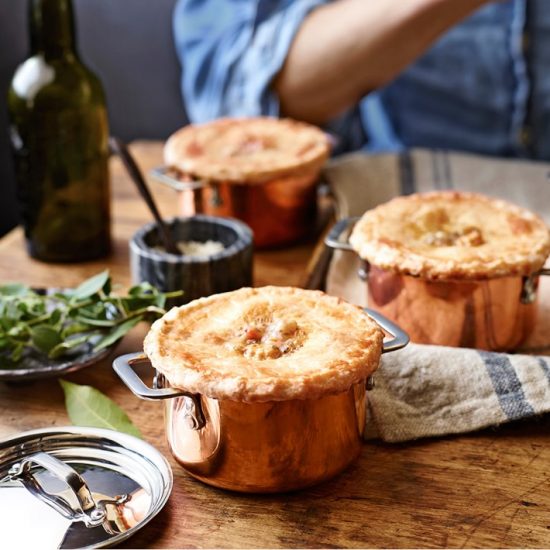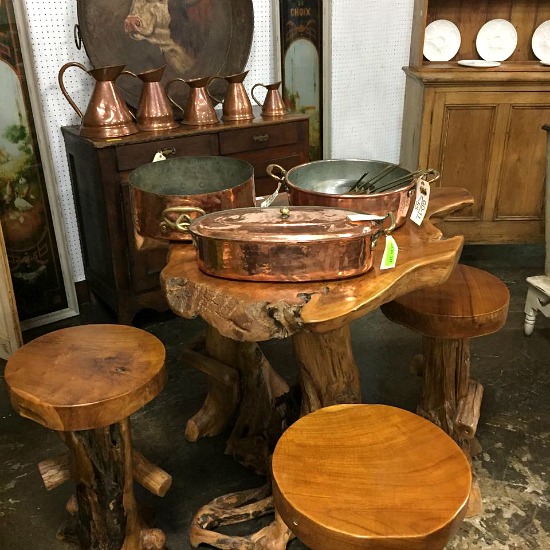Copper cookware and decorative accents continue to be a favored choice of kitchen accessory.
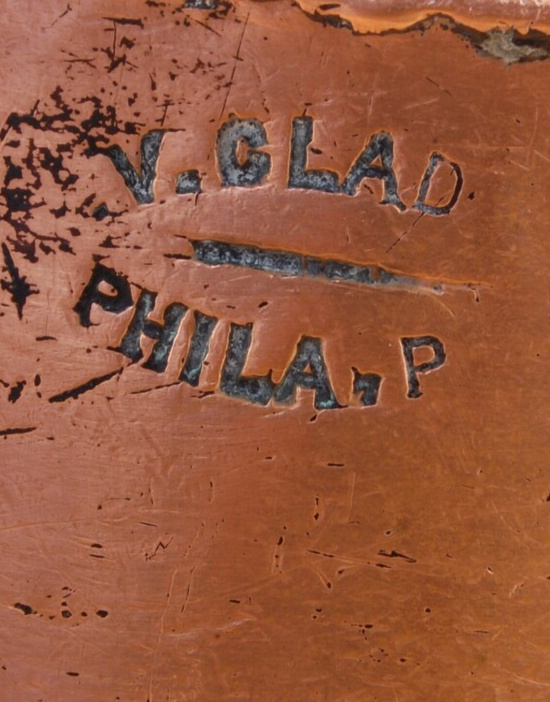
Philadelphia 8-3/8″ V. Clad Copper Sauce Pan
Exquisite in composition and artistic in execution, culinary preparation is performance art at its delicious best.
Celebrated chefs and accomplished cooks know the advantages of using copper cookware in food preparation.
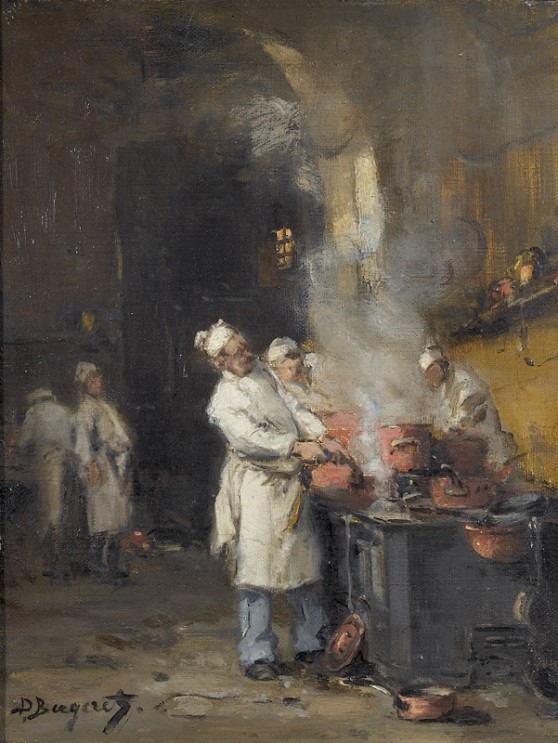 Denis-Pierre Bergeret Geschäftiges Treiben in der Küche {{PD-US}}
Denis-Pierre Bergeret Geschäftiges Treiben in der Küche {{PD-US}}
In the daily stove to table taste of home ritual most of us engage in copper far better serves the sizzle, sauté, sauce, and simmer in superior performance and quality taste.
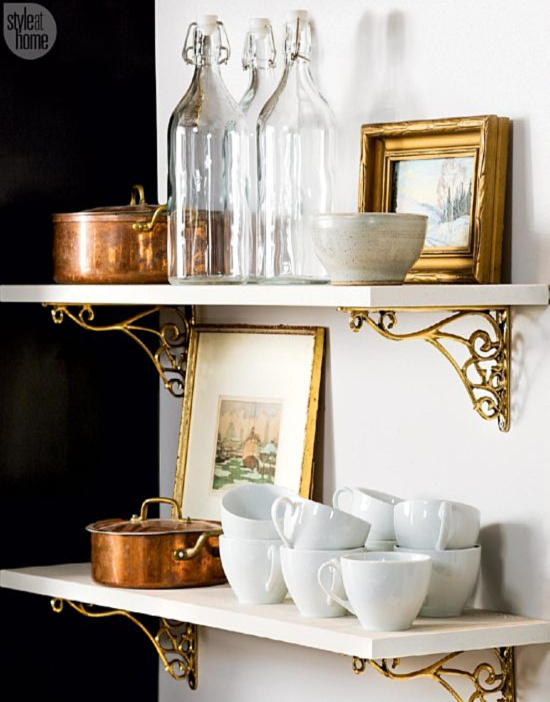
Temperature uniformity is essential in the cooking process. Too much heat scorches and burns while too little heat deters the notes of taste and flavor. Copper is an excellent heat conductor- the maestro of materials.
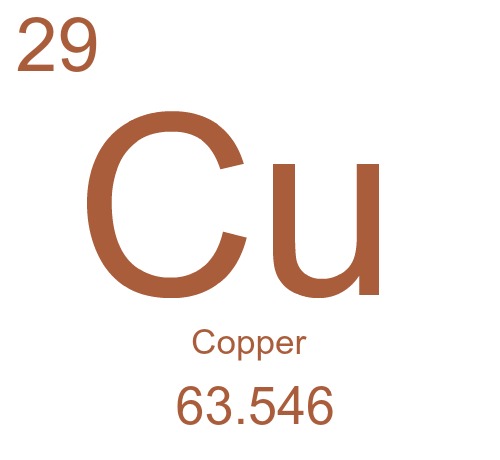
Copper cookware distributes a precise and even heat which is the essential element for proper temperature control.
Gorgeous is as gorgeous works, and copper cookware plates a gorgeous taste.
It’s Super Copper Tastic Excellent à la Decorocious!
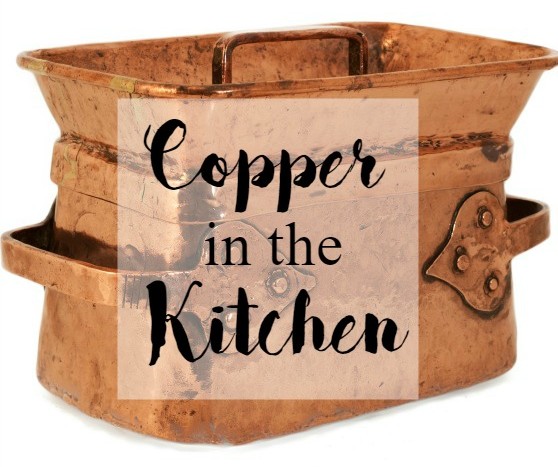
Cooking and decorating share similar attributes.
Balance.
Proportion.
Taste.
Visual appeal.
It is said that we eat with your eyes.
Decorative accents and embellishments should enhance the design rather than overpower it.
Less proves to be so much more in many design and decorating instances, visually speaking.
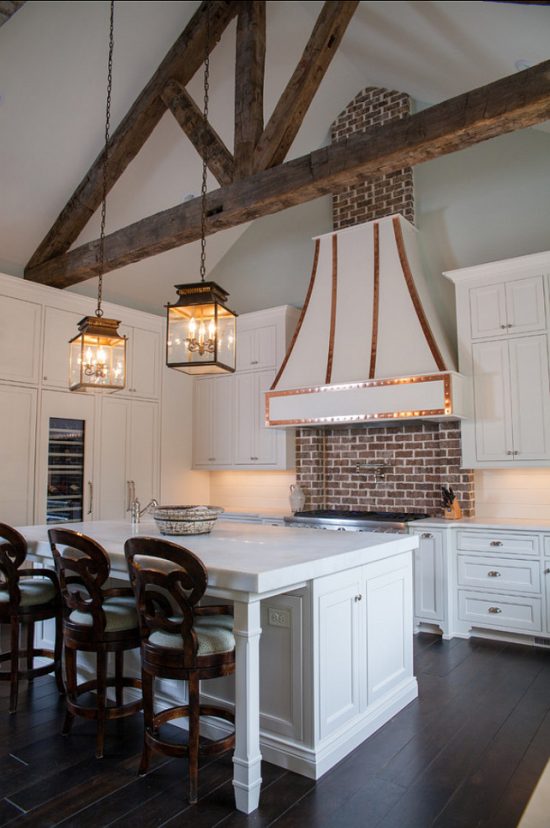
Take this white French kitchen hood accented with copper trim as an example.
The copper trim really pops against the white, and draws the eye to the contrast between the exposed brick backsplash/back wall and rustic wood truss with focal point precision.
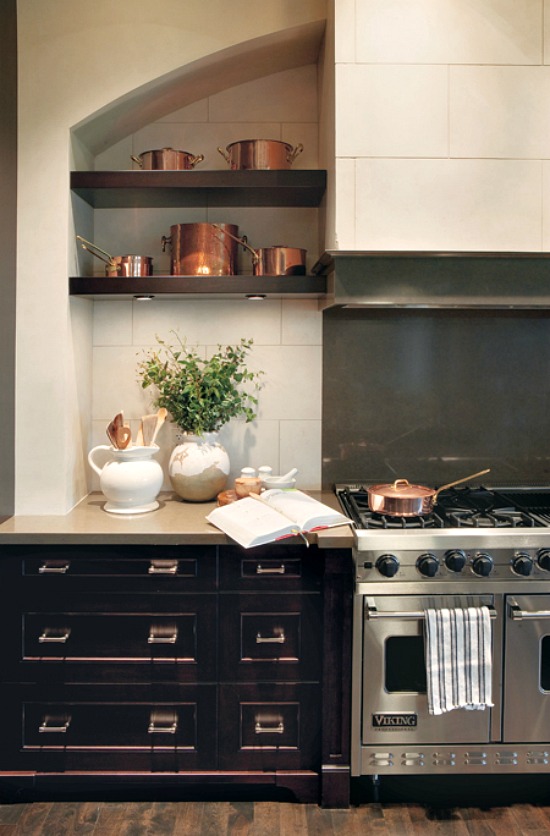 House & Home
House & Home
Copper lends a distinctive presence to accents and home decor accessories for unique, sumptuous, whimsical and eclectic kitchen decorating consideration.
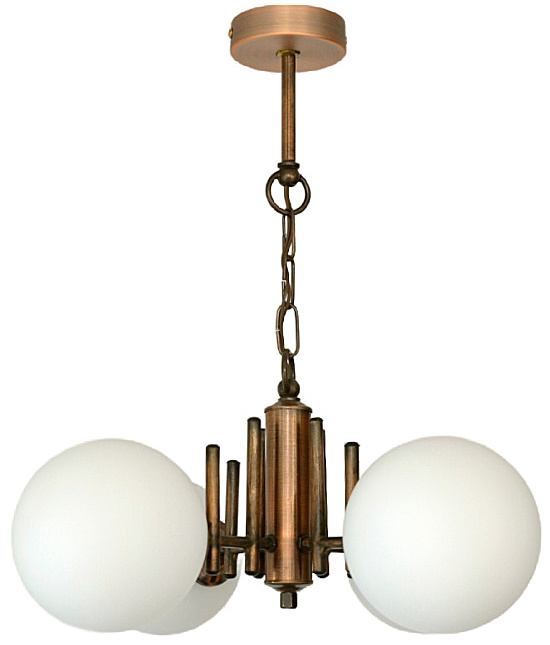
Vintage Brutalist Pendant Light
Portfolio favorites include this photo of the 2011 Kitchen of the Year created by chef Tyler Florence and the copper milk can -creamer accent piece.
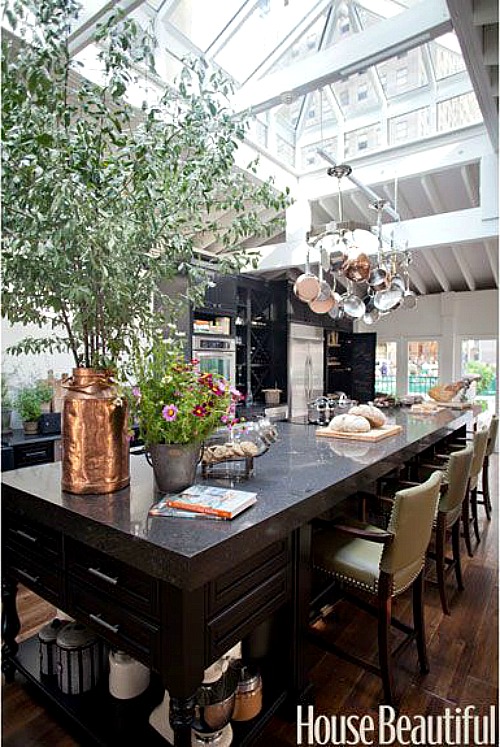
2011 Kitchen of the Year created by celebrity chef Tyler Florence
Talk about contrast.
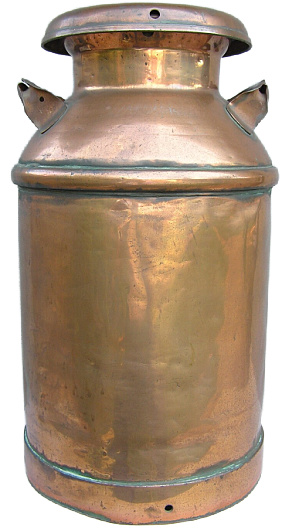
In the presence of dark cabinetry, high-tech appliances and farm to modern rustic, yet refined kitchen design and accessories stands this most impressive copper accent piece.
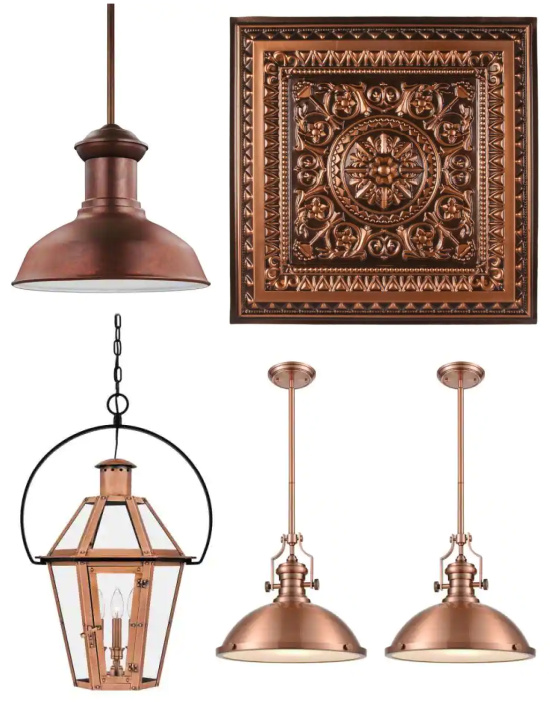
Mixing and mingling traditional and modern design and decorating styles with an antique or vintage pieces is thinking outside of the box of standard decor rules focal point perfection.
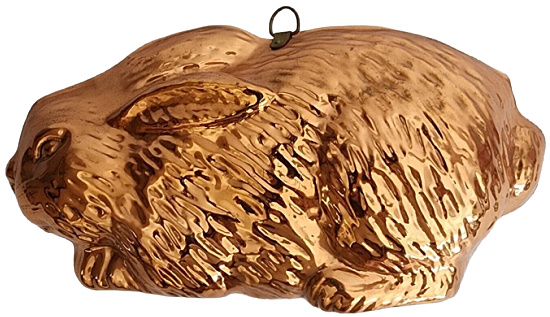
Vintage Copper Rabbit Bunny Mold
Lighting fixtures, artwork, architectural pieces, decorative objects- copper has got you covered.
This fabulous 1900s antique copper fireplace screen would make a fantastic decorative backsplash piece à la fireback.
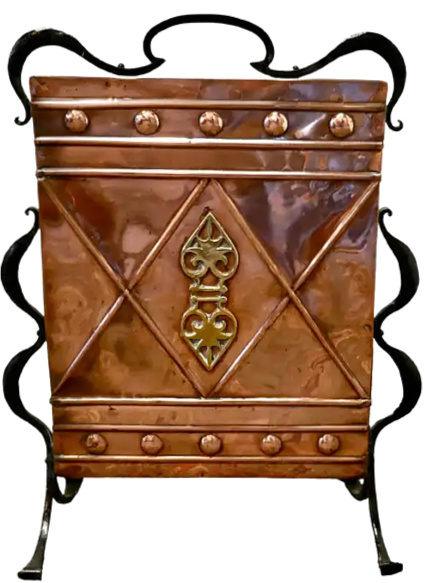
Victorian Arts and Crafts Copper and Iron Fire Screen
Patina and pit marks come with age- perfect imperfections, if you will.
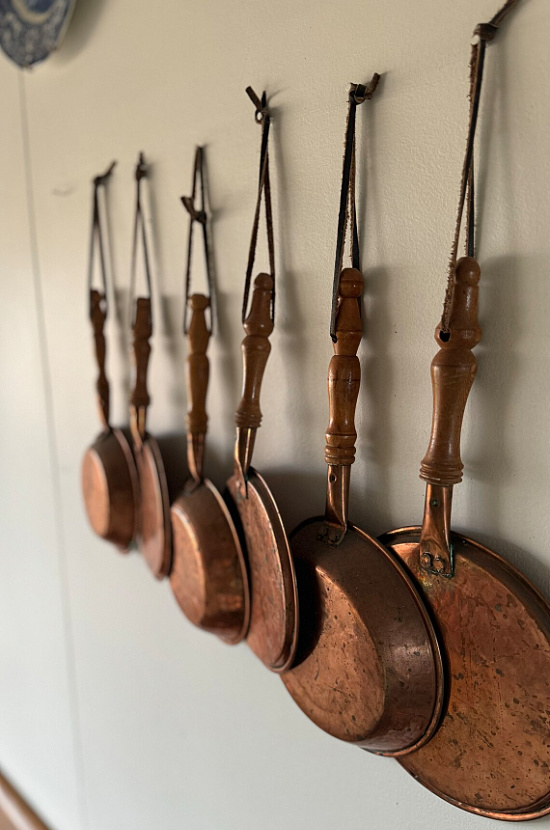
Patina is the greenish brown film that covers the surface of bronze, copper and similar metals brought on by the natural process of oxidation.
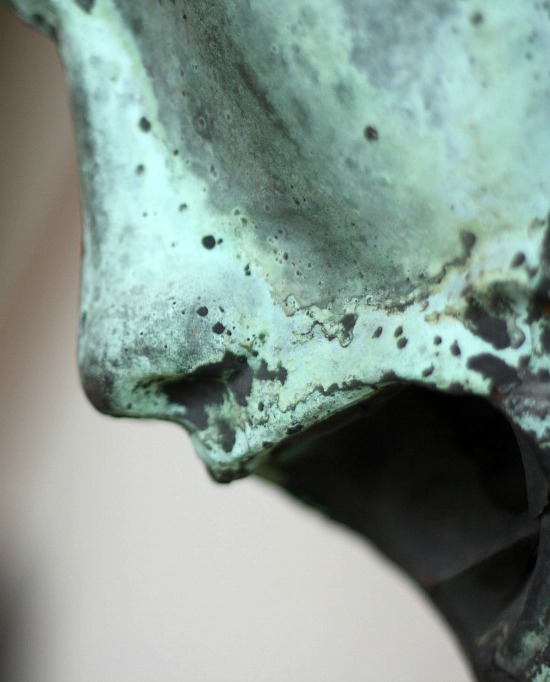
Buying vintage copper cookware pieces for decorating purposes differs from buying copper cookware pieces to actually prepare food in.
Vintage copper cookware pieces tend to be made of unlined copper.
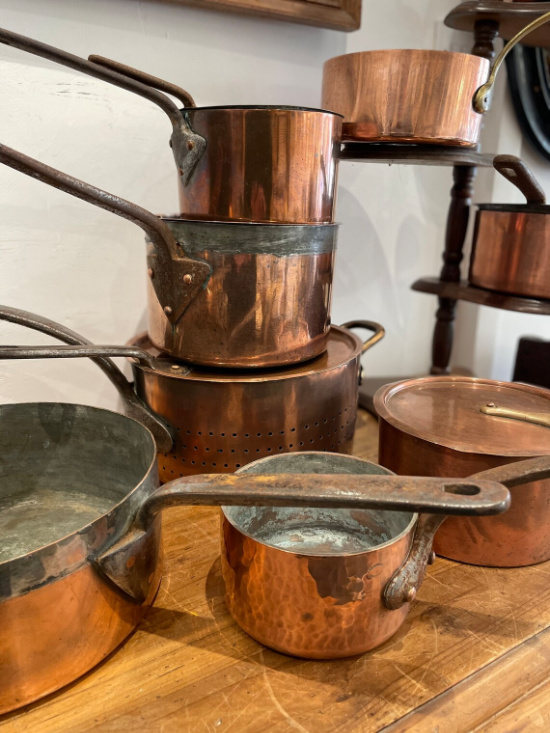
Antique French Rare Copper Colander
Unlined copper is categorized as a reactive metal, and may interact with foods.
Safety in cooking is of the utmost importance. Consider opting for copper pots and pans lined in tin or stainless steel which creates a nonreactive lining.
When cleaning copper cookware and decorative accents, avoid using an abrasive cleaner to eliminate the risk of scratching the copper.
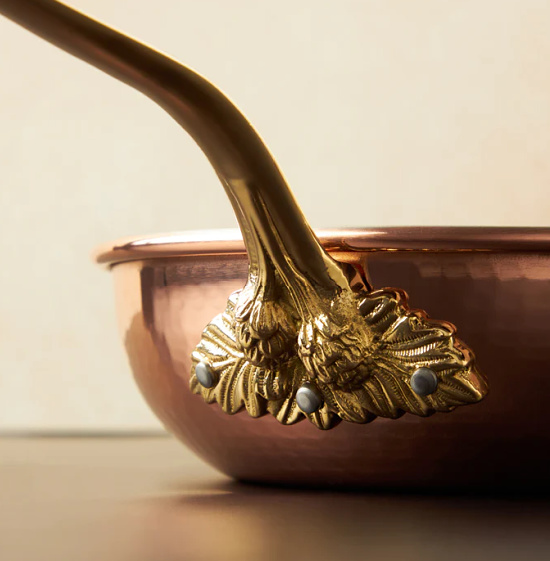
Allow your copper cookware to cool down after use. Sudden temperature changes from stove burner to dishwater can promote warping.
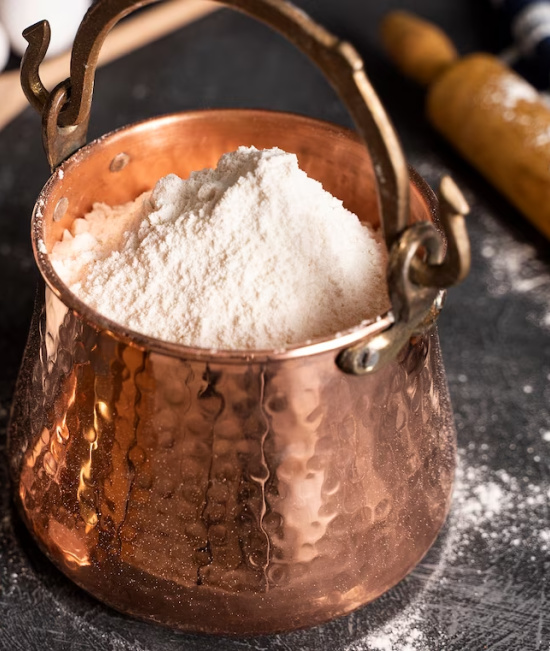
Be it copper, copper over tin, or copper over stainless steel- the point is the look, performance, and decorative effect.
Copper cookware and decorative accents remain an elegant element and traditional choice of material to complement taste, space, and of course to compliment the chef.


